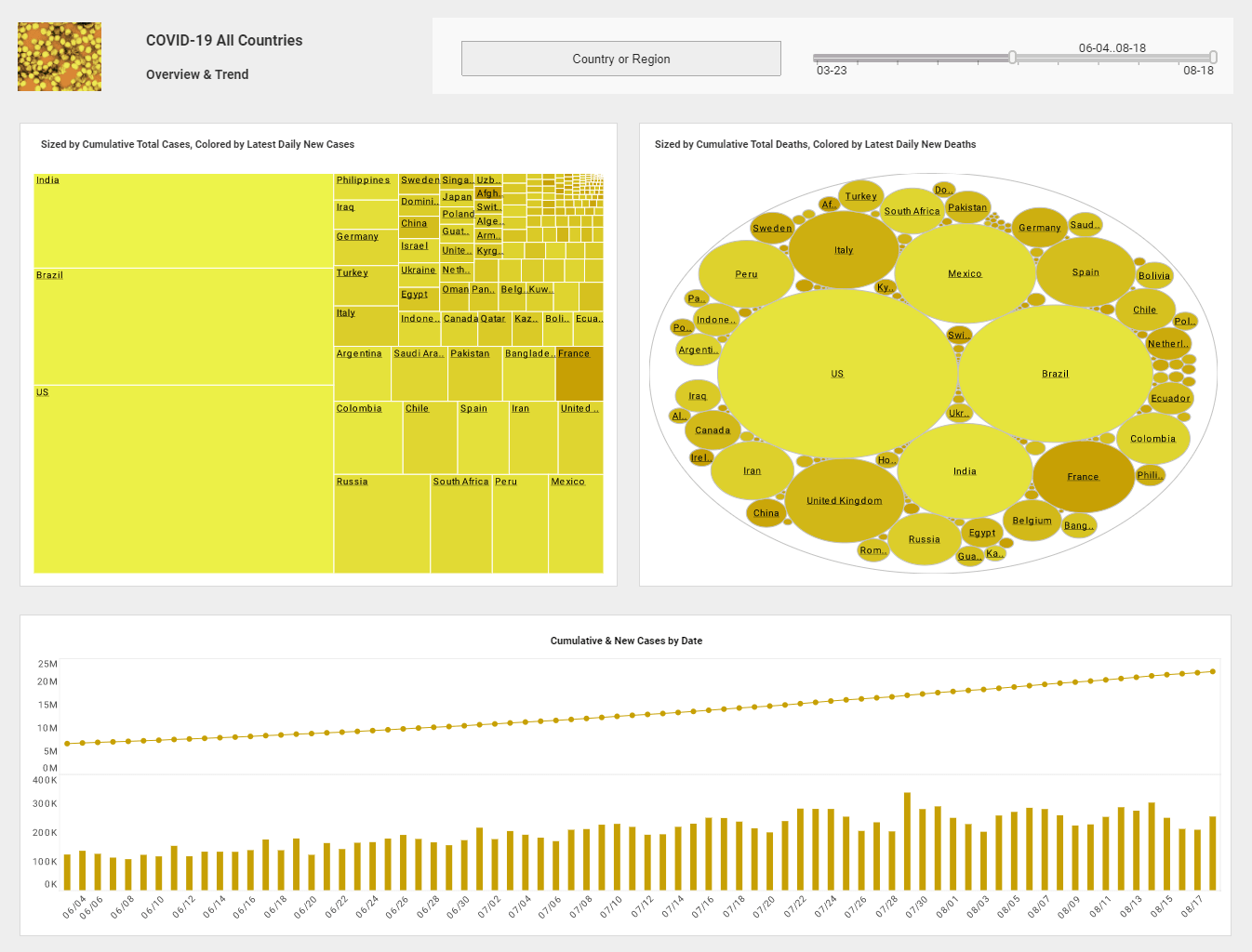InetSoft Webinar: Solve Problems With Better Data Management
This is the continuation of the transcript of a Webinar titled "Why MDM?” hosted by InetSoft. The speaker is Christopher Wren, Principal Consultant at TFI Consulting.
I think we need to again take that step back and say, all right, what's the business problem that I am trying to solve with better data management. Can I tie it to something like a reduction in mailing labels? That's a very specific business problem that customer data integration can help solve.
If we can take that step back, let me bite off a bit that I know I can do, and then build from that more and more into this master data management environment. So how do I keep my eye on the prize which is a full blown MDM environment, but act locally by coming up with some small piece that I can accomplish in a fairly decent amount of time?
Well you know some companies don’t need MDM. Master data management isn’t as necessary when all your data is in one place, and your data doesn’t change very much. And your executives don’t want to participate in this M&A theory. Then you probably don’t need it.
The real need for master data management comes when everyone has a different definition of customer or product or whatever metric in the financial data, and it’s scattered in 22 different systems around the company. Then you have a problem. Because companies are already starting to proliferate databases, how do you reconcile all that data that’s already been used on a day to day basis? That's where MDM really shines.

There is a process involved in what you get together and how you reconcile semantics, reconcile meanings of data. Once you do that we can data hub, and we can start having all these different systems communicate with each other, exchanging data and exchanging consistent standardized reconciled data. So everyone’s operating on the same version of the truth.
So there are some technology changes and some process changes. Both are necessary, both business and technology changes. It’s critical to have business participation within the MDM process. I think one of the key enablers of the technology is actually enabling business to interact with the data which is different from what we traditionally did in data warehouses.
There’s a difference between an ETL guy who specifically dealt with the data versus the business being enabled or data stewards on the business side being enabled to interact with the data. And I think that’s crucial because when you really think about the master data, who understands what the customer is or a product?
So there are some technology changes and some process changes. Both are necessary, both business and technology changes. It’s critical to have business participation within the MDM process. I think one of the key enablers of the technology is actually enabling business to interact with the data which is different from what we traditionally did in data warehouses.
There’s a difference between an ETL guy who specifically dealt with the data versus the business being enabled or data stewards on the business side being enabled to interact with the data. And I think that’s crucial because when you really think about the master data, who understands what the customer is or a product?
I always give the example of nutritional information surrounding a new product that's been introduced. Do you think the IT guy understands the specifics about that nutritional information? Of course, he doesn’t. A person on the business side understands that.
For master data management to be successful you need that type of person’s participation in the process. And so that process has to change to enable them to substantiate exchanges within the data. I think that’s where that paradigm shift has been happening recently surrounding MDM is that we have now have technologies which enable them to interact with the data.
Also I think though that, this is the same driver for people in data warehousing. Data warehousing professionals just have to reach out to the subject matter experts, and say, what does this data mean in the sources?
Despite the need for MDM, the reality of looking out in into the industry and seeing that how many people have actually done it is disappointing. How many people really have a lot of silos of un-integrated data within their analytical environment? You find the vast majority have that silo of un-integrated data, and then when they continue to have more and more problems with those data marts.
The data is coming, and what they are doing is basically sending an email to the subject matter expert saying, hey, is this wrong? It becomes much more of a difficult process of solving the problems. When you look at data warehousing, we’ve been trying to solve master data discrepancy problems for years and years.
What we basically said was we are going to have some ETL tools. We are going to have some custom written code. We are going to have a guy who mainly goes in there and tries to solve problems. Maybe we have a third party quality assessment tool kind of shoved in there to try to solve the problems associated with inconsistencies in my master data within the analytical environment.
At a minimum what MDM and processes of MDM technology do is they give you a holistic framework to manage that whole process of solving inconsistencies in the master data. So instead of having a whole bunch of pieces that you try to glue together to solve it, you can use a tool that was specifically built to enable me to do it.


